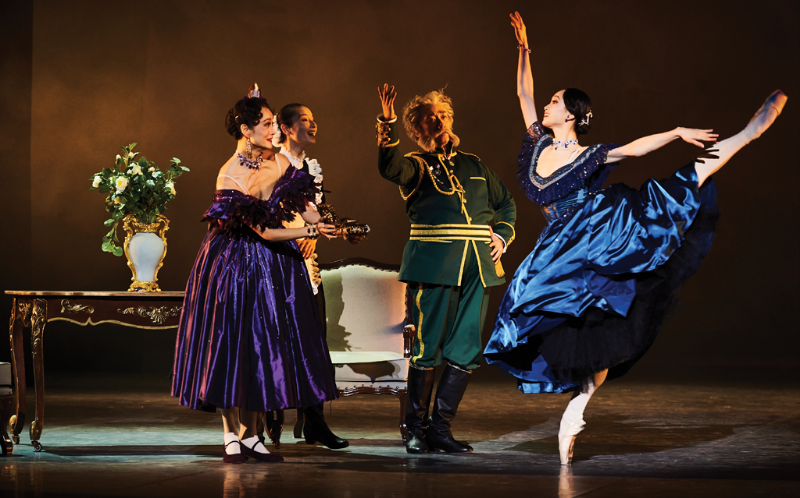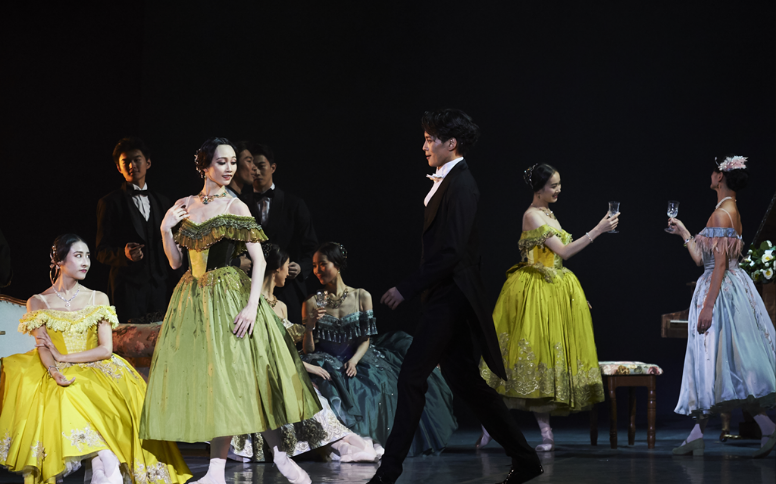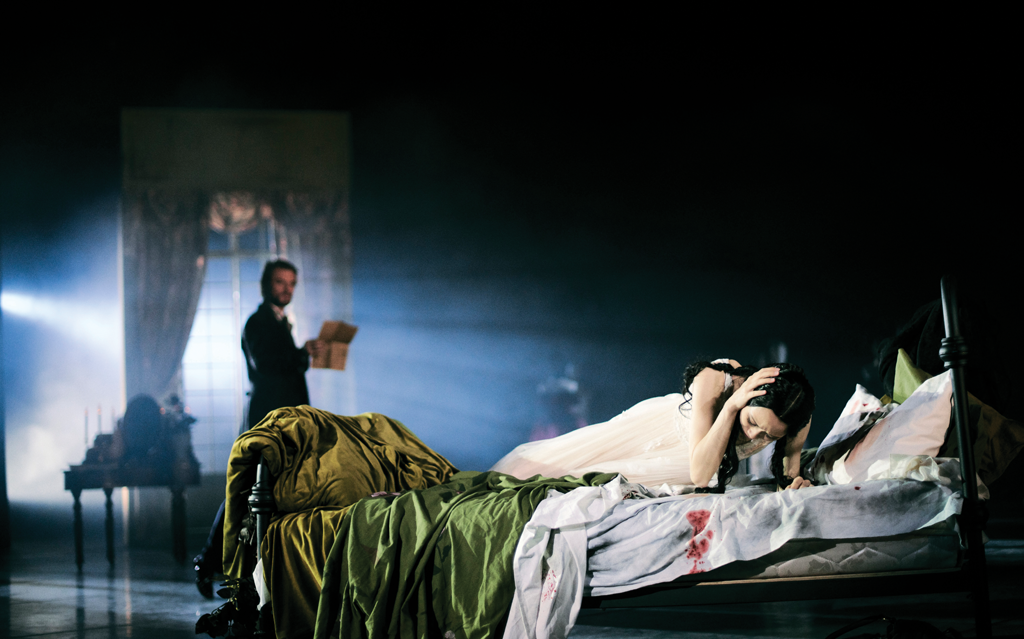
A flower’s tragic life
The Shanghai Ballet will soon delight us with the Lady of the Camellias, a grandiose dance piece inspired by one of the most gripping love stories of all time. Originally written in the 19th Century by French author Alexandre Dumas fils (French word for son), the novel inspired a number of adaptations on its way to become a classic. From theatre and opera, films and musicals, it would take some time before it was adapted to dance. We take a look at the various artistic genres inspired by Dumas’s timeless romantic story.
Alexandre Dumas’ renowned novel The Lady of the Camellias captures like no other the zeitgeist of the
post-Romantic period. Far from being a fairy tale, this love story masterly juxtaposes the sumptuousness
of its setting at the beautiful and hedonistic city of Paris, with the stark reality of a self-destructive
relationship. Dumas’ realistic depiction of the main characters, with all their flaws and dreams, is
perhaps the reason behind the novels’ long-lived impact, impelling many creators of different artistic
realms to revisit it, reinventing the story, over and over again.
How it happened
In Paris’ romantic years of 1800’s, beautiful Marguerite Gaultier leads an extravagant, scandalous life
as the mistress of various well-connected men, including a powerful duke. Nicknamed “lady of the
camellias”, the courtesan is never seen without her favourite flowers which she wears in white or red to
signal her availability for love. One night at the opera, Marguerite catches the eye of Armand Duval, a
handsome bourgeois. As they fall for each other, the young man became obsessed, soon realising he doesn’t
have the financial means to keep up with his lover’s lavish lifestyle. The couple’s idyllic plans of a
shared life in the countryside are interrupted by Armand’s father who convinces Marguerite to
end the illicit relationship. Acting purely out of love, and to spare Armand from future trouble, she
decides to go back to her previous life. After a dramatic sequence of events, the story comes to a tragic
end with the death of Marguerite, plagued by tuberculosis, a feared lung disease that, back in the day was
the leading cause of death, affecting all social classes and ages. Naturally, along with other social
illnesses, the malaise became a common topic in literature, visual arts and opera.
From print to stage
This semi-autobiographical story was first published in 1848, inspired on the author’s own love affair
with Marie Duplessis, a Parisian courtesan he had been involved with not long before. A few years later,
in 1852, Dumas premiered a version of his novel at the Théâtre de Vaudeville in Paris. After an astounding
success in France, the play soon crossed the Atlantic to land in the United States, and the role of
Marguerite (often called Camille in English-speaking adaptations) became one of the most coveted by
American actresses. Among them, the well-known Sarah Bernhardt, who quickly became associated with the
character after starring in Camellias, a production staged in London and Paris, later the subject of
numerous Broadway revivals. It took roughly a year for the play’s success to reach other latitudes,
arriving in Italy where it inspired lyrical composer Giuseppe Verdi, who turned it into music for the
iconic opera La Traviata (translated from the Italian into English as the fallen woman). Once again
Duplessis changed names, this time being called Violetta, while Armand became Alfredo. Due to a
first unfortunate cast selection, the opera didn’t become an instant triumph. After its
Venice’s San Benedetto premiere, it became evident that the first singers were not up to the
task. However, it took only a few months and a renewed cast to transform its revival into one of the
world’s favourite operas.
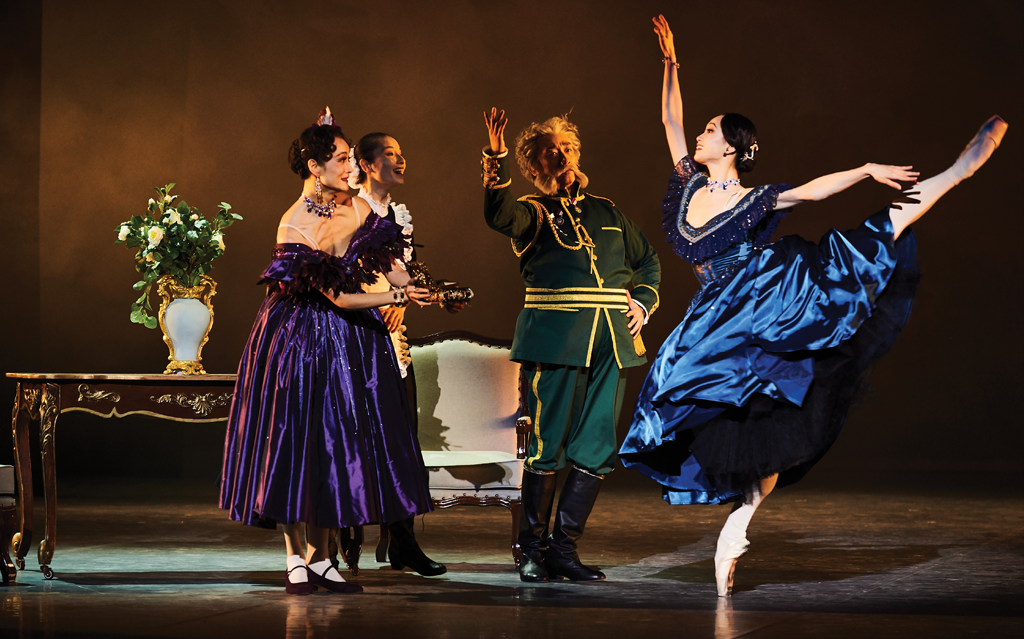

Cinematic turn
After the operatic version, it didn’t take long for Marguerite’s tragic story to reach a modern
audience through the newest of artistic forms: cinema. In 1912, French directors André Calmettes and Henri
Pouctal premiered their mute adaptation praised for its remarkably slick imagery. From then on, the story
has been the subject of over 20 film versions in numerous countries, from La mujer de las Camelias, a 1955
Argentinian production by Alexis de Arancibia to La Dame aux Camélias, a French-Italian film
released in 1981 with Isabelle Huppert as the protagonist. Twenty years later, in 2001 it was the turn of
Moulin Rouge, Hollywood’s version, starring Nicole Kidman and Ewan McGregor on the main roles. More
recently, the film took the stage in a musical piece that premiered at London’s Piccadilly Theatre, where
it stayed until May last year, and is currently being staged on Broadway.
Up in the air
Besides shining in projection rooms and theatre stages, Dumas fils’ masterpiece did not escape the gaze
and energy of the dance world. In 1963, heavily influenced by a theatrical performance (The Lady of the
Camellias with Vivian Leigh) and two films (Camille with Swedish diva Greta Garbo and Last Year at
Marienbad by Nouvelle Vague French director Alain Resnais), the Royal Ballet’s director Frederick Ashton
choreographed Marguerite & Armand, a one act ballet depicting a condensed version of the novel. Ashton
picked Franz Liszt’s Sonata in B minor for the show, an interesting choice in connection with the novel,
to say the least, given that the Hungarian composer, like Dumas, also had an affair with the real-life
Marguerite, Marie Duplessis. Starring Ashton’s muse, the immortal Margot Fonteyn, and legendary Rudolf
Nureyev on the main cast, the piece had a dazzling impact, letting the unique pair take more than 20
curtain calls before a cheering audience. Over a decade later, in 1978, American choreographer John
Neumeier presented his modernized version of Lady of the Camellias, in a piece created for star dancer
Marcia Haydeé and the Stuttgart Ballet, danced to the sound of Frédéric Chopin’s beautifully evocative
music. Many were the adaptations and remakes of this classic produced around the world, and Macao was no
exception. In 1999, the Hong Kong Ballet stepped on the stage of the then brand-new Grand Auditorium at
CCM to delight the audience with Marguerite and Armand’s glamorous-tragic adventure. The piece was
choreographed by Domy Reiter-Soffer, who also created the décor and designed the costumes.
Coming soon
More than 20 years have passed since their first visit, and the unfortunate lovers will be back at our
shores, this time brought by the Shanghai Ballet, one of Asia’s most prolific dance companies. Created in
2019 by the company’s celebrity choreographer and artistic director Dereck Dean, a former artistic
director of the English National Ballet, this version is conceived from the perspective of the heroine.
Using a flashback approach to retell the story, opening with Marguerite’s dying scene, Dean sought to
“integrate the characters’ personalities into each dance segment”, highlighting the tragic tone and
dramatic conflict. Although the cast’s elegant and energic dance movements are undoubtfully crucial in the
piece, the settings, lighting design and, of course, the music certainly play an important role. The score
was written by Grammy award nominee Carl Davis, a prolific American composer and conductor who has created
tunes for some of the most loved British television dramas as well as cinema and symphonic works. By the
way, Davis was also in Macao once, in 2008, with the Hong Kong Philharmonic conducting a series of scores
for Charlie Chaplin’s films.
So, now that we have a clearer, broader picture of
this immortal story, what can we expect when the tragic romance is brought to life on our very own
stage? Despite the historical distance and different social context, the emotions emanating
from this ballet are still strongly rooted to Dumas’ novel and the themes he wished to address when he
first wrote it. Knowing that the author was in his early twenties back then probably explains some of the
immaturity conveyed by the young male protagonist. Finally, we may even juxtapose how the feminine
condition and women’s rights have been changing, not without a feeling of deeper empathy for Marguerite’s
fate. Other than that, we just surrender to the pure joy of watching fine ballet dancers doing what they
do best.
Alexandre Dumas fils
Born in Paris in 1824, Alexandre Dumas fils (French word for son) is the offspring of celebrated French
writer Alexandre Dumas pére (French word for father), who is himself known for great classics such as The
Three Musketeers, The Count of Monte Cristo and Queen Margot. The younger Dumas also achieved great
success, although his writing style was rather different from his father’s. Writing about his own time,
Dumas fils discovered his vocation as a playwright, inspired on his family experience as the son of an
illicit love affair. He was one of the precursors of the “problem play”, a form of realistic drama that
emerged in the 19th Century Europe. He often portrayed tragic female characters and the fate of
illegitimate children. When he moved with his father to the outskirts of the French capital in1844, Dumas
was romantically involved with Marie Duplessis, a beautiful courtesan that would be the inspiration for
his literary master-piece, The Lady of the Camellias.
Marie Duplessis (the original Marguerite)
When he wrote The Lady of the Camellias, Dumas fils relived his affair with Marie Duplessis, a famous
Parisian courtesan who, like the novels’ heroine, died very young and in debt, struck by tuberculosis.
Born into poverty, the gorgeous and witty Duplessis quickly rose to host salons attended by some of the
most affluent and fashionable Parisians. That probably explains why, despite her fallen woman reputation,
hundreds of people attended her funeral.
小仲馬1824年出生於巴黎,父親是創作《三劍客》、《基督山伯爵》和《瑪爾戈王后》等名著的法國知名作家大仲馬,雖然寫作風格與父親的截然不同,但小仲馬同樣取得了巨大的成功。小仲馬是19世紀歐洲興起的現實主義戲劇「社會問題劇」的創始人之一,身為私生子的家庭經歷啟發了他展開劇作家的生涯,書寫其所處的時代,經常刻畫悲慘的女性人物和私生子的命運。在1844年與父親一起移居到法國首都的市郊期間,小仲馬結識了美麗的交際花瑪麗.迪普萊西,並以她為原型創作了他的文學代表作《茶花女》。
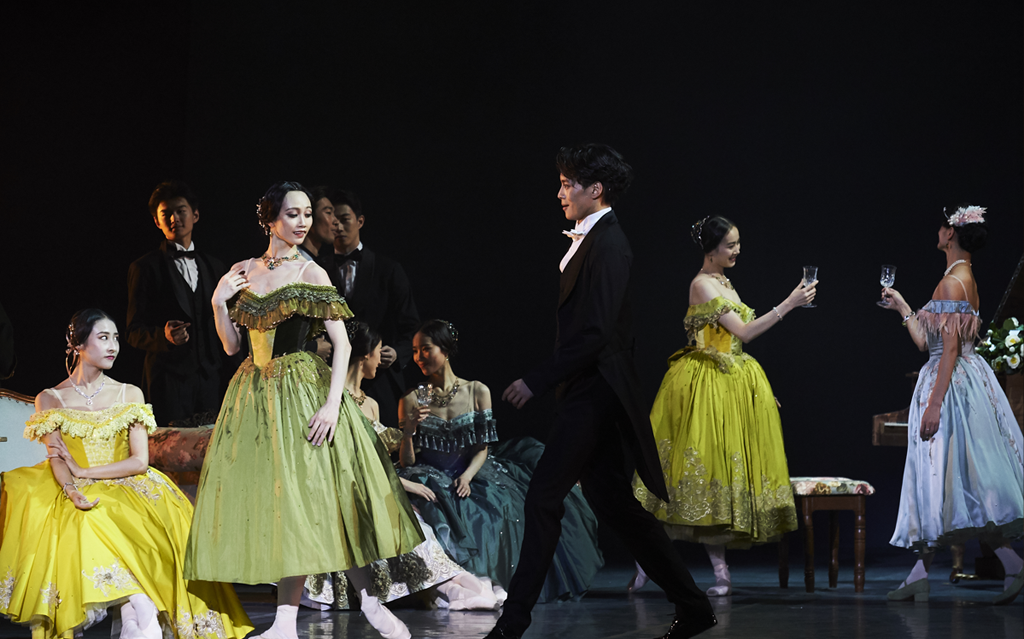
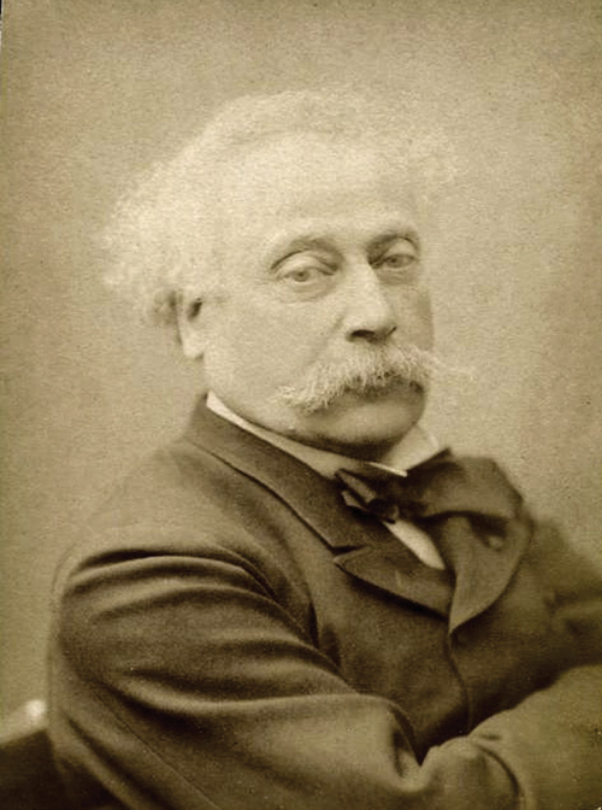
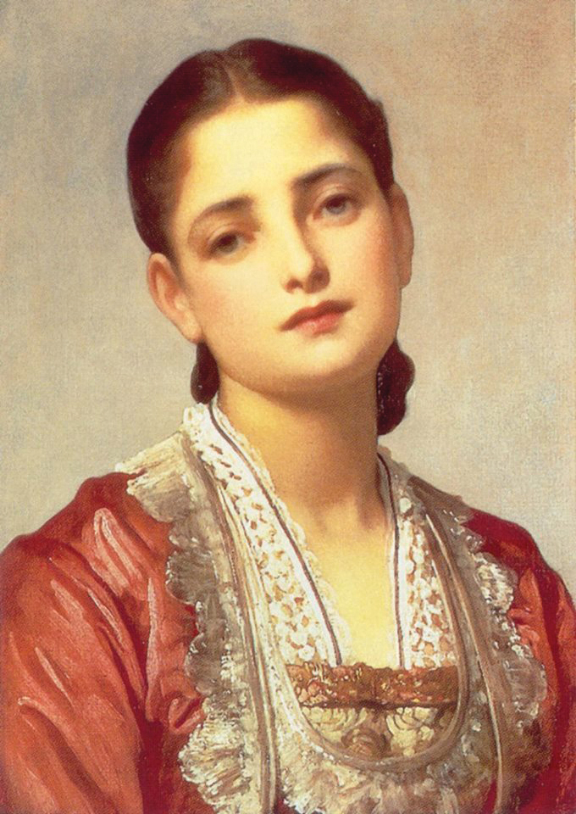
Portrait of Dumas fils 1824 -1895
Shanghai Ballet - The Lady of the Camellias
09-10.06.2023
Grand Auditorium
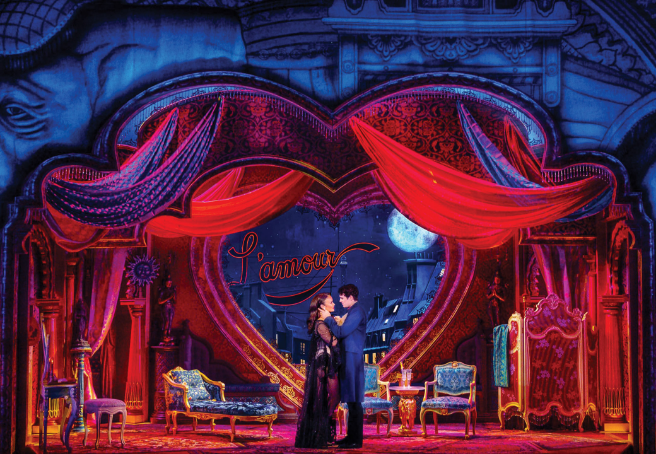
A scene of Moulin Rouge the Musical, on Broadway in 2019.
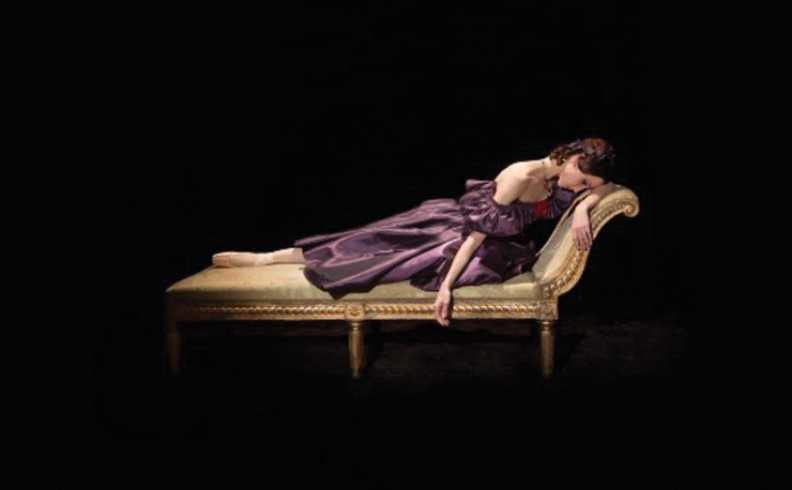
John Neumeier’s choreography staged by the Bolshoi Theatre, premiered in 2014.
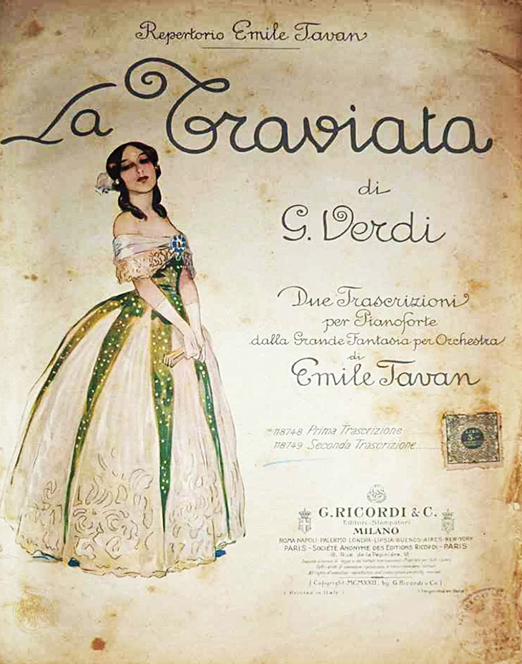
A turn of the century poster of La Traviata, an operatic adaptation of Dumas’ classic.
